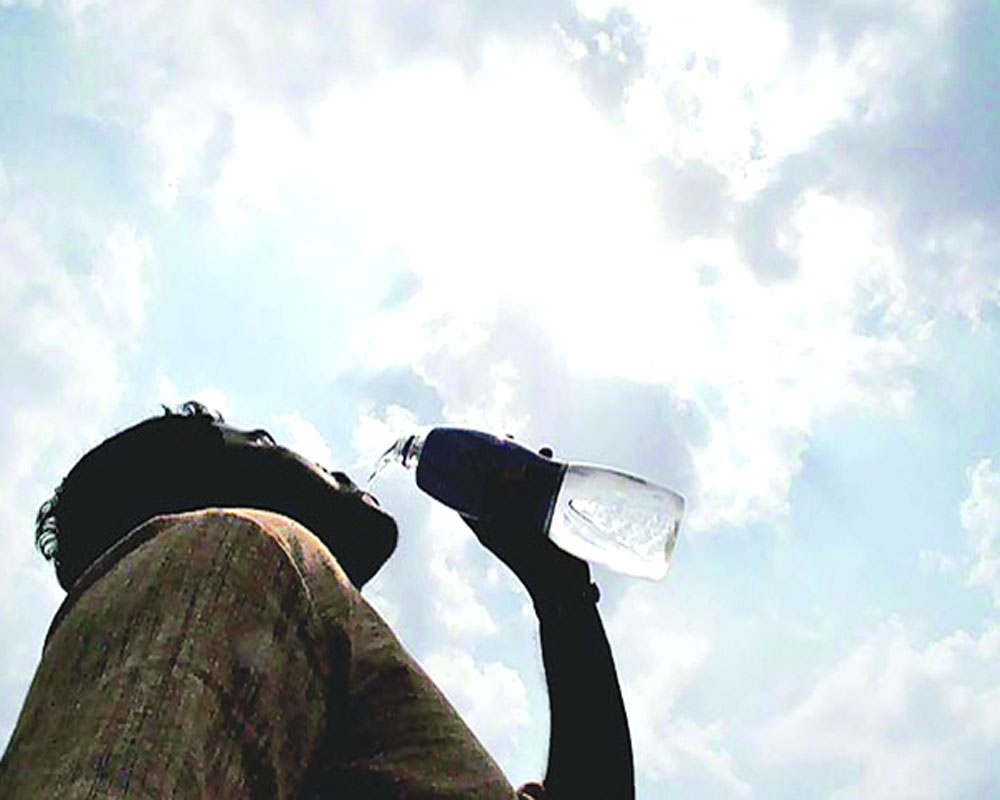Conferences or predictions made by various scientists/organisations on climate change will not yield any results unless such exercises translate into action in the form of meaningful reduction in GHG levels. It’s up to the Government to act
As the month of March scripts the final chapter of winter, one cannot help but notice how this year was climatically different from other seasons in the preceding years. The intermittent rainy days this year helped fight bad air days and were instrumental in bringing the pollution levels down.
This is indeed a miracle considering the fact that winter seasons are usually air pollution nightmares. Healthy rains in the northern plains, coupled with ample snowing in the hills somewhat marked a thankful departure compared to last year when the Himalayan mountains, especially the foothills, bore a dry appearance due to the absence of proper snowfall in March.
With a winter that is signing off on a positive note, can we gingerly expect the summer of 2019 to treat us well? Maybe not if some reports by meteorological offices are to be believed from across the world. With the imminent advent of the summers, experts in the weather offices and laboratories have started making well-researched scientific predictions on what the summer has in store for us. Though these have no direct bearing on how India will fare during the hottest months, they do give a general idea of what is in store for mankind globally.
Climate forecasters in the United Kingdom warned that 2019 is expected to be one of the hottest years of all time. The British meteorological office estimated that average global temperatures for 2019 will be 1.10C above pre-industrial levels, putting it among the five hottest years ever. In fact, it is uncomfortably close to the record-breaking 2016, when temperatures were 1.15C above the 1850-1900 period. The predictions were based on the worsening impacts of climate change caused mainly by spiralling greenhouse gases. Britain by itself experienced a hot summer in 2018 with the year’s average temperatures around 0.96C above pre-industrial levels.
Predictions for India are not promising as well. The combined effect of climate change and an evolving El Niño could make 2019 the hottest year ever. In fact, the past three years from 2015 to 2017 happened to be the warmest ever recorded. And although the current year started off with a moderate La Niña phenomenon, which generally has a cooling effect on global climate, it is going to end up being the fourth warmest year, clearly showing a warming trend.
In fact, the 20 warmest years on record have occurred in the last 22 years. This trend also sits in perfectly with the emission rates of greenhouse gases (GHGs), which were at a record high in 2018, according to the World Meteorological Organisation.
According to climate scientists from the Pennsylvania State University, the combination of human-caused warming and a natural upswing in temperatures increases the odds that any new El Nino year will be the warmest ever. Many weather forecasters around the world, including the India Meteorological Department (IMD), had predicted the development of an El Niño phenomenon by the end of 2018. This has already made winters in India warmer than usual and if the trend continues into the spring of 2019, it will mean that the summers, too, will witness soaring temperatures.
Another major indicator of the warming trend due to climate change is ocean heat content (OHC). The year 2018 recorded a new high in terms of OHC since observations began in 1940. There is more heat stored in the earth’s oceans today than at any time in the last 78 years. When GHGs trap heat in the atmosphere, some of it gets converted into surface temperature but 90 per cent of it gets assimilated into the oceans. Therefore OHC is a much better indicator of climate change than surface temperatures. So how will India cope with this temperature spike? Although it’s clear that nothing as such can be done to register an immediate impact, much can be done to prevent worse summers.
The green house gas (GHG) emissions are the main culprits behind the rising number of hot days. This can be curtailed by bringing a decisive difference in the usage of fossil fuels, which contribute heavily to GHG emissions. Thermal power plants and vehicular fuels are the main bulk source of GHG and sadly enough, India is unable to ramp up the alternative energy sources so that they can replace the polluting thermal energy and fossil fuels.
Although on the face of it, worsening climate seems to be the prima facie reason for soaring temperatures, the real anthropogenic reasons cannot be overlooked. The numerous climate conferences or climate scientists’ predictions are only a pointless exercise if the same are not translated into action in the form of meaningful reduction in GHG levels. The time has come for the Government to start assessment of the efforts based on GHG level monitoring. This alone will ensure that further time and money is not wasted and effective progress is clocked in protecting the environment. If this is not done, we will soon have only one season all throughout the year — summer.
(The writer is an environmental journalist)


























